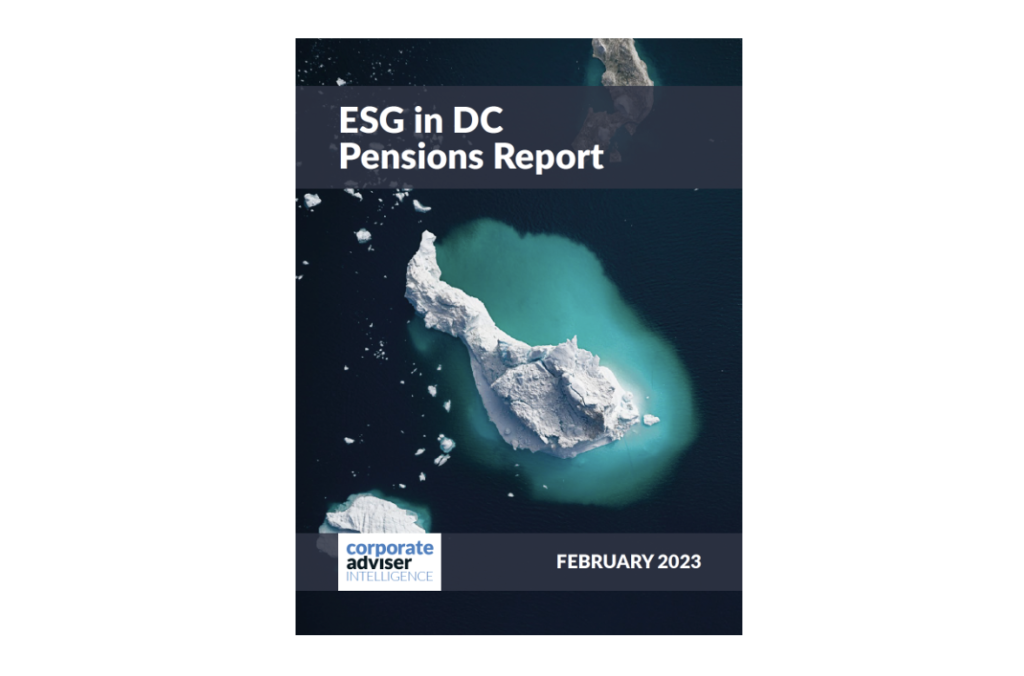Pension providers have disclosed carbon intensity figures ranging from 24 to 169 tonnes per £1m invested, with Aon having the lowest published carbon emissions in the sector, according to a Corporate Adviser Intelligence report out today.
Aon has published emissions intensity for scope 1 and 2 emissions of 24.1 tCO2e/£m invested, while Crystal reports a figure of 169 tCO2e/£m. However, Crystal has been reducing its carbon footprint rapidly, achieving a 31 per cent reduction in just 12 months, the ESG in DC Pensions Report reveals. Aon has managed to achieve above-sector-average returns for its portfolio despite its low carbon approach.
Portfolio carbon intensity across the DC sector averages 89 tCO2e/£m, meaning a £100,00 pot is responsible for 8.9 tonnes of carbon per year, more than 50 per cent higher than the 5.2 tonnes per person per year created by UK individuals’ day-to-day living, according to World Bank figures.
The report also highlights the complexities and apparent contradictions in data published so far. Most carbon intensity figures relate to equities and bonds only, and some providers only publish figures by asset class, rather than at a portfolio level. Furthermore, the methodology used to measure carbon impact creates distortions in the data, with certain asset classes such as sovereign bonds having massive carbon intensity figures because they reflect the carbon emissions of an entire nation state. For example, Nest’s 2022 TCFD report shows the carbon intensity for its equity portfolio was 85 tCO2/£m for Scope 1 and 2 emissions.. It was a similar picture for its corporate bond portfolio, with a financed emissions figure of 74 t CO2e/£m. However the intensity of its liquid assets, which include low-risk sterling liquidity and sterling short-duration investment grade bonds was 1,351 tCO2e/£m — almost 20 times more carbon intensive than the equity or bond portfolios. The financed emissions of its futures (commodities) stands at 3,566 tCO2e/£m.
The report shows all DC pension providers and asset managers have now set net-zero targets, with a view to halving emissions from portfolios by 2030. But there is no standard baseline date being used for these 50 per cent reductions, although 31 December 2019 is the most common start point.
To date just four asset managers in this report publish a financed emissions figure for assets under management.
The report shows that the vast majority of DC pension providers now use ESG screens and tilts on their default strategies. Four years ago just five master trusts used these tools in their default offering.
It also highlights how more DC pension providers and asset managers are investing in impact funds but this still remains a relatively small proportion of the investment universe.
Figures in the report show growth in AUM for assets managers having slowed over the past year against more difficult economic conditions, but assets are still up by 6.72 per cent overall amongst managers surveyed. AllianceBernstein has seen the most significant growth — up 13.5 per cent, while Aviva Investors has seen the biggest fall, down 18.5 per cent. BlackRock remains by far the largest asset manager in the UK DC universe – with AUM that are broadly equal to all other asset managers combined.
Most asset managers have increased their specialist ESG analyst teams by 50% or more. Schroders has more than doubled the number of specialists it employs and has the biggest team in the sector, while BlackRock and SSGA (along with Vanguard) now offer ‘split voting’ to clients giving UK pension funds more of an active stewardship role.
SSGA was the most active asset manager in 2022, attending more company meetings and voting on more individual resolutions than its main competitors. Aviva Investors was most likely to vote against the board. Aviva investors and Schroders are affiliated to more leading ESG organisations than others in the sector. Seven DC pension providers now offer members indicative votes on ESG issues.
The report highlights how ESG organisations continue to proliferate, with DC pension providers and asset managers now affiliated to at least 280 separate groups, almost 90 per cent of which are only cited by one company in this survey, raising questions about the impact some of these ESG organisations can achieve.
Corporate Adviser Intelligence head of research John Greenwood says: “It is early days for carbon reporting in the DC pensions sector and real caution is needed before making drastic decisions based on the patchy data that is currently available. But we are beginning to see real figures begin to emerge. Comparing apples with apples is difficult, and the methodology used to calculate carbon footprint does create seemingly contradictory numbers, particularly in relation to sovereign debt.
“That said, making knee-jerk decisions based on the data included in this report would be unwise. It is the direction of travel that is as important as where schemes are starting from. Trustees and independent governance committees must not get caught in a race to low carbon that sacrifices returns, but the good news is schemes publishing low carbon intensity figures across their portfolio have not lost ground on their more polluting peers so far.”
